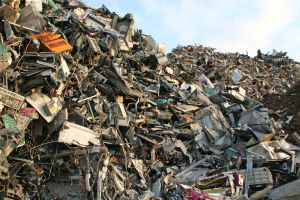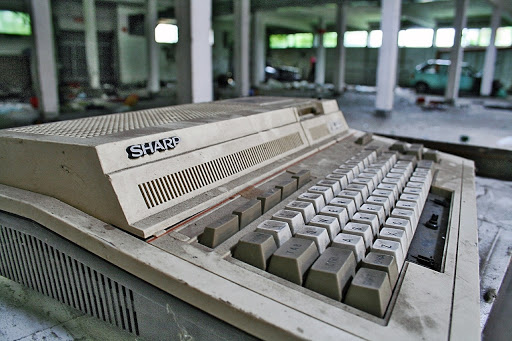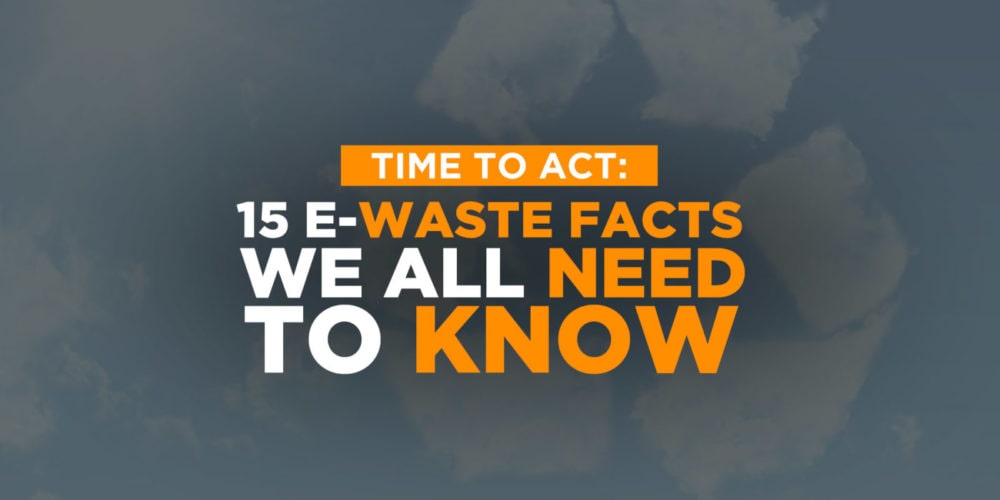Here are simple e-waste facts that you need to know to be a better amateur environmentalist.
The #1 fact you should know is this: virtually 100% of e-waste is recyclable.
Another fact is that there are important environmental and economic benefits of recycling used electronic devices.
Recycling helps us recover the parts that still have value so they can be reused, and prevents thousands of toxic chemicals from seeping into our soil and water if they pile up in landfills.
Another fact: substances commonly found in e-waste, including lead, cadmium, and mercury, are extremely hazardous to our health.
Unfortunately, another fact is that most of the e-waste being produced globally doesn’t get recycled.
The good news is that survey after survey confirms a simple fact: Americans support the concept behind recycling.
What we need now is to expand the public’s knowledge of what can be recycled.
A lot of people don’t realize that their used devices can be recycled.
Electronic devices that can be recycled are:
- Smartphones
- Laptops
- DVD players
- Xbox players
- and other electronics
These items can be recycled in similar ways to cans, paper, and plastics. And many people may not be aware of how risky it is to put those items in their trash bin.
There are two things we can all do to improve e-waste recycling:
- Make a regular habit of recycling any used electronics you no longer want or need.
- Help educate other people about the importance of recycling e-waste. And that begins by educating yourself about e-waste facts.
Why is Recycling E-Waste so Important?

E-waste is any electronic product that someone wants to discard. Unfortunately, not enough people opt to have them recycled.
And they might be surprised to learn how much value their old cell phone or laptop has. There’s gold inside your used electronics – literally.
There’s more gold in 100 tons of smartphones than in 100 tons of gold ore, which is used to make new metals.
Yet in 2016, 435,000 tons of mobile phones got thrown away, and with it not just that valuable gold, but other rare materials like silver, copper, platinum, and palladium.
It’s the equivalent of throwing away your old piggy bank with money still in it.
But e-waste is more than just a valuable commodity when it comes to recycling. It’s also a product responsible for 70% of all hazardous waste in landfills.
Even more worrisome is the skyrocketing amount of e-waste headed to landfills or to incinerators to be burned.
With consumers replacing their electronic devices more frequently than ever, we’re literally burying ourselves under a mountain of e-waste each year, putting considerable pressure on our environment, health, and wellbeing.
In 2017, 1.46 billion smartphones were sold. By 2020, that number is expected to go as high as 2.87 billion.
And as the Internet of Things keeps extending Internet connectivity beyond standard devices like laptops and smartphones to non-internet-enabled devices and everyday objects, there could be up to 50 billion networked devices in use within a few years.
Every major challenge begins with each one of us recognizing the problem and doing what we can to make it better.
If you don’t want our environment to get polluted by hazardous waste, make a commitment to recycling all your unwanted electronics.
And keep in mind that knowledge is power. The more you know about e-waste, the more you can help educate your friends, family, neighborhoods, and co-workers about this challenge, and inform them about how they can help, too.
Here are 15 e-waste facts that will arm you with knowledge for this long-term conversation.
15 E-Waste Facts We All Need to Know

1. Data Security is a Concern
Businesses and individuals are frequent targets of hackers, and the easiest way for them to do that is to get hold of your discarded cell phone, laptop or computer, and recover the information on it. Studies indicate businesses lose up to $11.7 million on average to cybercrimes. Deleting your data doesn’t mean it’s been destroyed, just that it’s been hidden from view. Your precious data continues to live on and can be easily recovered.
2. Recycling Firms Are Security Experts
Recycling companies can securely destroy data on your hard drives, smartphones, and other devices. By taking your used electronics to a recycling firm, they can wipe clean any personal information on it. They also provide you with full documentation of the data destruction.
3. Incineration Doesn’t Work
In some developing countries, the “solution” to rising amounts of e-waste has been to burn it in incinerators. But that’s also an environmental disaster waiting to happen. When e-waste gets heated up, toxic chemicals are released into the air, damaging the atmosphere and leading to respiratory problems. Damaging our atmosphere remains one of the biggest environmental impacts from e-waste.
4. Small Devices are a Problem
It isn’t just large items, like bulky computer monitors or television sets, that are considered a problem. Researchers broke down the contents of the e-waste that got generated in 2016 to see what devices were being disposed of at the highest rates; nearly half were small devices like smartphones and tablets. Large electronic devices accounted for just 20% of the e-waste being thrown away. It’s anticipated that smaller devices will become an even larger percentage of the e-waste stream in coming years as millions replace older models of cell phones and smartphones.
5. Making New products
The parts in e-waste can be used in a variety of ways and a variety of products. Plastics can be recycled to make garden furniture. Metals can be used for everything from jewelry to automotive parts. Battery components can be reused in new batteries.
6. Who Produces the Most e-waste?
The United States produces more e-waste each year than any other country. In 2014 alone, the United States produced 11.7 million tons of e-waste.
7. Energy Savings
Recycling e-Waste is a great way to save energy. Recycling uses far less energy than mining for virgin ore to make new metals. Recycling one million laptops saves the same amount of energy that it would take to power 3,657 homes each year.
8. Mobile Phone Use is Skyrocketing
There now are more mobile phones in existence than people on the planet. Based on the number of active SIM cards in use today, it’s been estimated there are more than 7.2 billion mobile devices being used, compared to fewer than 7.2 billion people on the planet. Mobile devices are growing faster than the Earth’s population.
9. Billions of Dollars Get Lost
Because electronic devices contain valuable raw materials like gold, copper, silver, and nickel, they can be extracted and resold to manufacturers creating new products. Those materials are lost when e-waste is sent to landfills. It’s been estimated that in 2016, the total value of the raw materials within e-waste amounted to $65 billion.
10. Losing Heavy Metals
Up to 40 percent of the heavy metals in U.S. landfills are contained within discarded electronics. If we don’t recycle those metals, manufacturers have to rely on the far more costly process of mining for virgin ore to make new metals.
11. Circuit Board Risks
One of the most hazardous toxins in e-waste is brominated flame retardants, used in circuit boards and plastic casings. Long-term exposure from landfills can lead to impaired learning and memory functions.
12. Lead Poisoning
Lead is another toxin in e-waste, and lead poisoning can cause health problems that include the impairment of cognitive and verbal activity. Long-term exposure can lead to paralysis or coma.
13. Low Recycling rates
Worldwide, it’s been estimated that only 15-20 percent of all e-waste is being recycled.
14. Recycling Creates Jobs
Recycling creates jobs. It’s been estimated that recycling computers alone can create 296 new jobs each year for every 10,000 tons of computer waste that gets processed. The recycling industry is growing and creating hundreds of thousands of new jobs across the globe.
15. Staying Home
China has stopped accepting certain kinds of e-Waste being imported there, so more e-waste is staying in the U.S. now. That raises the possibility of not only increasing recycling rates but turning more of the valuable materials within them over to the circular economy.
E-waste Facts Concluded
E-waste is a serious problem, and we all have a part to play in addressing it. Help educate everyone you know about e-waste, and remind them that the solution is simple: to take all their used electronics to a proven e-waste recycler like Great Lakes Electronics Corporation.
Great Lakes Electronics Corporation has years of experience performing environmentally friendly recycling of electronic products.
The team at Great Lakes Electronics Corporation will disassemble these items into component parts, and the ones that still have value can be sold for reuse. Other parts are used for metals recovery. Everything within your devices gets recycled.
To learn more, contact Great Lakes Electronics Corporation at 888-392-7831 today.

